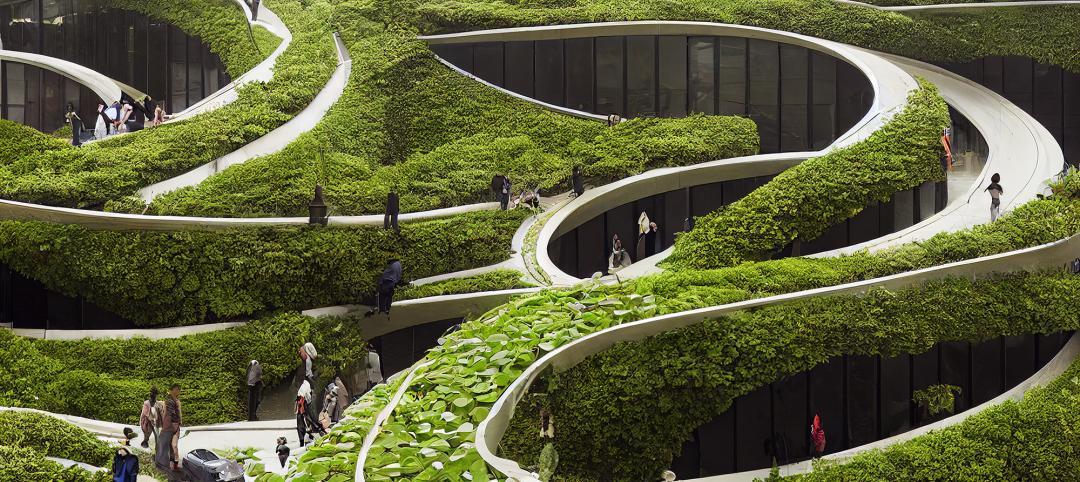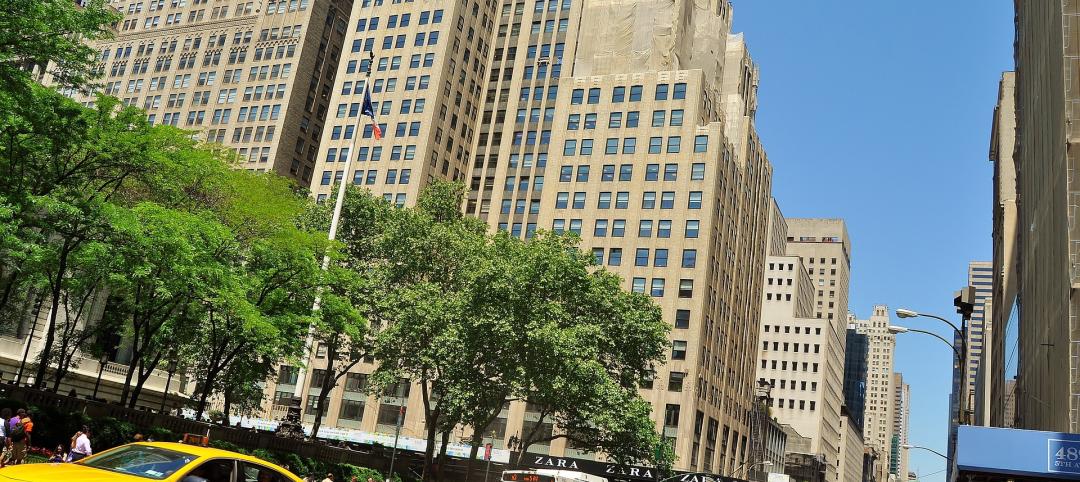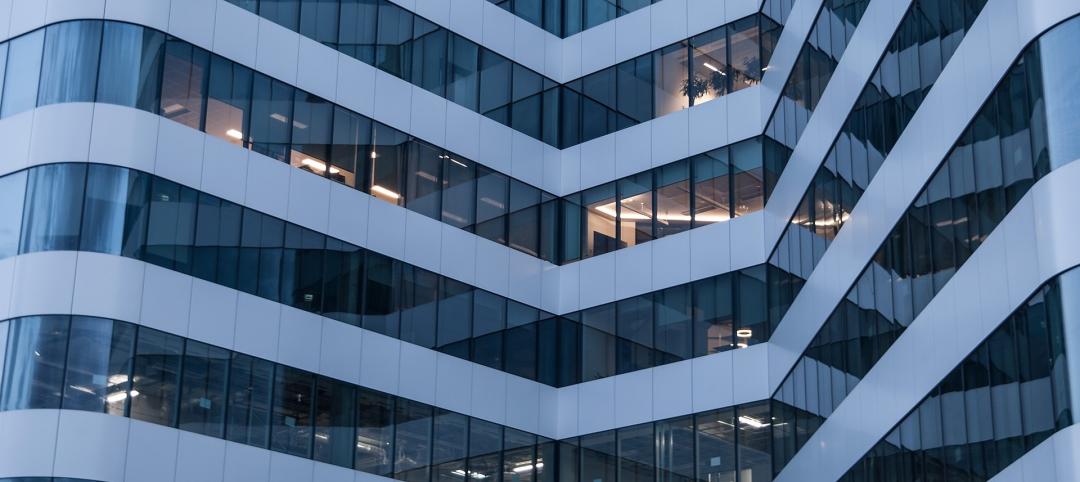Walking the talk. It’s a phrase we’ve all heard and one that gives you a no-bones-about-it proof point. In Knauf Insulation’s case, walking the talk provided the organization with a comprehensive, better-educated green building vantage point – and proof point – when it came time to take a big step in sustainable development.
In 2007 after fire destroyed an office building on the Knauf Insulation corporate campus in Shelbyville, Ind., Knauf targeted, and in 2010, earned U.S. Green Building Council LEED-NC Gold certification for a new 24,860 sq. ft. corporate engineering office building. This provided Knauf with both a challenge and a tremendous opportunity. We became a more active player because of this experience due to the fact that LEED buildings are now pervasive.
Here are two proof points for the growth in green building: more than 40,000 projects are currently participating in the commercial and institutional LEED rating systems, comprising more than 8.3 billion square feet of construction space across the U.S. and in 120 countries; green building is projected to contribute $554 billion to the U.S. gross domestic product for the period 2009 to 2013.
In walking the talk, Knauf experienced the trends and desires that sustainable-minded end-users are after: increased energy cost-savings, enhanced indoor environmental quality and social benefits with responsible resource use and manufacturing. Now, we have a building that is 38 percent more energy efficient than a typical building, which also uses much less water. While we continue to be proud of the ways that the company’s products and processes touch the industrial, commercial and residential markets to create enhanced sustainability, it’s important to note that everything in our sustainable development has been extremely cost-effective. We haven’t had to spend a lot of green to be green.
Sustainability benchmarks like LEED certification are becoming a real target for users of commercial and industrial insulation products - and may even be the right aspiration for your organization.
Working for more insulation credits
There is a point of contention with the USGBC and LEED credits certification - most of the time, all the pipe and duct insulation that goes into a commercial building is part of the mechanical contract. Therefore, it’s not individually considered or singled-out with regard to being available for LEED credit. This is something Knauf Insulation is working on to make commercial builders more aware of the impact of insulation, because if you don’t bid the insulation outside the mechanical contract, you can’t go in and get the recycled content value for the insulation or the renewable resource value that could be in your insulation.
The only way now that the mechanical products can have an impact outside of the building performance, and actually bring in a material and resources credit, is to be considered as a separate contract. We’ve been in communication with the USGBC regarding this particular aspect: getting credit for items like duct and pipe insulation because they have such a huge benefit with their sustainability attributes should be a foregone conclusion.
LEED-ing by example
Our LEED example illustrates that simply the everyday products you use can make a significant green difference to building owners, operators and occupants. We have Knauf Insulation R-40 walls in our building, much more than in a typical building. Using an extraordinary amount of insulation in the walls helped us meet our day-lighting targets.
Today, our insulation also has 55.7% post-consumer recycled content. That in itself is a huge social benefit, but that figure also generates a critical result with manufacturing savings – it allows Knauf to use 15% less energy in manufacturing insulation products. There is perhaps no more noble sustainability story than using post-consumer content to save energy in homes and buildings.
The manufacturing energy example also speaks directly to our pipe insulation regarding embodied energy recovery. When you really examine it, it’s miraculous how much energy you can save per lineal foot of pipe insulation. In about one day, a lineal foot of pipe insulation recovers the energy that it took to manufacture that foot of insulation. And the energy savings are similar with cold pipes; in a day or two, the embodied manufacturing energy is recovered. Insulation is essentially perpetual in what it does. Once the embodied energy is paid back, insulation just keeps saving energy, reducing carbon emission, and saving water via reduced demand on power plants.
Another example from our building is the maximization of daylighting and the minimization of electric lighting. Motion sensors shut off lights when there’s no movement in a room. In the Knauf Auditorium event/training space, heat and ventilation do not turn on unless carbon dioxide sensors recognize the respiration and presence of people using the room. Sustainable features also include water-saving plumbing fixtures and a white membrane roof that minimizes the heat island effect.
Manufacturing trends
The recycled content I mentioned is something that Knauf Insulation is very proud of, but perhaps the most important step in our sustainable development was switching to a bio-based binder (the material that gives our product shape) known as Ecose TechnologyTM, which speaks also to a growing trend with green chemistry, bio-formulations and finding ways to reduce dependency on fossil fuels and fossil-based additives. The 2.5% LEED credit for utilizing rapidly renewable resources is one of the harder LEED credits to get.
For our manufacturing process, we use Knauf family farms that actually grow the same amount of crop that we use for our bio-based binder production. Never in my career did I think I would be interested in sustainable agriculture. It’s important for organizations to actually consider that perspective of looking at alternate ways to source materials. It’s a very positive social aspect of the market transformation toward greener buildings.
Asking the right questions
Sustainable building is the result of the desire and patience to ask the right questions and find the right answers. It makes sense to simulate a building hundreds of times on a computer before you build it to really have a good idea of how it’s going to perform. On the other end of the spectrum, there are still people out there insulating an industrial process to deliver functionality, but not energy efficiency. They’re not designing it to optimum techno-economic performance; there could be a better economic thickness that would use less fuel and deliver fast payback.
More owners and operators of green structures and facilities here and abroad are getting terrific buildings that simply perform better. Realistically, it is also naïve to think that there isn’t skepticism around potentially adding cost to building construction.
For someone constructing a building, if it all comes down to 5 or 10 percent more cost to do a smarter building, and that’s your primary motivator, part of the thought process should be considering the future possibility of not being able to buy fossil fuels any longer – or what if a geopolitical event were to halt the availability of fossil fuel for the U.S. economy? Extending this scenario, if renewable energy is also a future consideration, it may then be too expensive if you haven’t designed your building to perform as well as it possibly can. You would be dealing with the cost of wasted energy.
Energy efficiency is completely critical when you start thinking about renewable energy sources and the probability of success. This is one current difference between the U.S. and Europe, where infrastructure is more rapidly becoming as energy-efficient as possible. In Europe, if you have a building, there’s a built-in incentive to insulate and make a building perform as well as it possibly can. Savings are that much greater and give renewable energy sources a better chance to succeed
Additional advantages
Chief results of sustainable building are resource efficiency and energy efficiency - long-term reducers of cost. There are also additional advantages which may not be so straightforwardly tangible to some, such as comfort. A pleasant work environment is a productive one. In our LEED building, individuals have a three-degree control over their individual office. Compare this to a building that both performs poorly and offers no adjustability for individual spaces; there you might see a haphazard array of space heaters or fans. Space heaters and fans are symptoms of poor-performing buildings.
Like many other LEED-certified buildings, we also have an exercise facility. If you look at healthcare expenses, promoting wellness is both good for employees and employers.
Productivity and comfort may also be enhanced because of acoustics. Since we took our insulation up all the way through the ceiling, you don’t get crosstalk or disruptive noise between offices. Acoustics is one way you can use insulation as an advanced strategy to earn innovation points via LEED certification.
The triple bottom line
When I think about my grandchildren and future generations, I know sustainable choices are the right choices. And they’re often easy choices to make for practical economics, environmental health and for our communities.
Here’s how simple sustainability really is. We take curbside recycling which gets transported by train to our facility, so we can decrease landfilling and the use of virgin resources and also use energy-efficient transportation. We then turn that recycled content into insulation that helps save energy. It’s not any harder than how you’d strategize through a different business operation, but it is the right thing to do and it’s financially viable. +
--
Scott Miller is director of sustainability at Knauf Insulation. With more than 30 years of product assessment and testing experience, Scott is an insulation performance expert with a special focus on sustainability. He holds many insulation product patents and is very active in industry associations such as NAIMA, ASHRAE and ASTM.
Related Stories
Cultural Facilities | Aug 21, 2024
Baltimore’s National Aquarium opens 10,000-sf floating wetland that mimics the harbor’s original tidal marsh habitat
The National Aquarium in Baltimore has opened the National Aquarium Harbor Wetland, a 10,000-sf floating wetland that mimics the Inner Harbor’s original Chesapeake Bay tidal marsh habitat. Located between Piers 3 and 4 on Baltimore’s Inner Harbor, the $14 million project features more than 32,000 native shrubs and marsh grasses.
Mixed-Use | Aug 21, 2024
Adaptive reuse of a Sears store becomes luxury mixed-use housing
6 Corners Lofts at 4714 W Irving Park Road, Chicago, Ill., opened in March of 2024 as a 394,000-sf adaptive reuse project born out of a former Sears store.
Building Materials | Aug 19, 2024
Federal 'buy clean' construction materials label program unveiled
The U.S. Environmental Protection Agency announced a plan for implementing a new label program to boost American production of more climate-friendly construction materials and products. The label program will prioritize steel, glass, asphalt and concrete.
Museums | Aug 19, 2024
The Tampa Museum of Art will soon undergo a $110 million expansion
In Tampa, Fla., the Tampa Museum of Art will soon undergo a 77,904-sf Centennial Expansion project. The museum plans to reach its $110 million fundraising goal by late 2024 or early 2025 and then break ground. Designed by Weiss/Manfredi, and with construction manager The Beck Group, the expansion will redefine the museum’s surrounding site.
AEC Tech | Aug 19, 2024
Harnessing AI to revolutionize architectural design and creativity
Architects are wondering if AI will replace us. For Vessel, the gains offset the fear. We believe there is wisdom in the unattributed quote, “You won’t lose your job to AI. You will lose your job to someone using AI.”
Reconstruction & Renovation | Aug 19, 2024
Movement to protect historic buildings raises sharp criticism
While the movement to preserve historic buildings has widespread support, it also has some sharp critics with well-funded opposition groups springing up in recent years. Some opponents are linked to the Stand Together Foundation, founded and bankrolled by the Koch family’s conservative philanthropic organization, according to a column in Governing magazine.
Government Buildings | Aug 19, 2024
GSA posts new RFI for enabling energy efficiency, decarbonization in commercial buildings
The U.S. General Services Administration (GSA), in collaboration with the U.S. Department of Energy, recently released a new Request For Information (RFI) focused on enabling energy efficiency and decarbonization in commercial buildings. GSA wants to test innovative technologies through GSA’s Center for Emerging Building Technologies.
MFPRO+ New Projects | Aug 16, 2024
At 60 stories, the Paramount multifamily development will stand as Nashville’s tallest high rise
When complete, the 60-story Paramount building, at 750 feet high, will be the tallest high rise tower in Nashville, Tenn., surpassing the city’s current record holder, the 617-foot AT&T Building. The $390 million Paramount project recently launched condo sales after securing more than $230 million in construction financing.
Urban Planning | Aug 15, 2024
New York City begins first large-scale porous pavement installation
New York City is installing its first large-scale porous pavement installation along seven miles of roadway in Brooklyn. The project will keep 35 million gallons of stormwater out of the combined sewer system each year, according to a news release.
Urban Planning | Aug 15, 2024
The magic of L.A.’s Melrose Mile
Great streets are generally not initially curated or willed into being. Rather, they emerge organically from unintentional synergies of commercial, business, cultural and economic drivers. L.A.’s Melrose Avenue is a prime example.

















